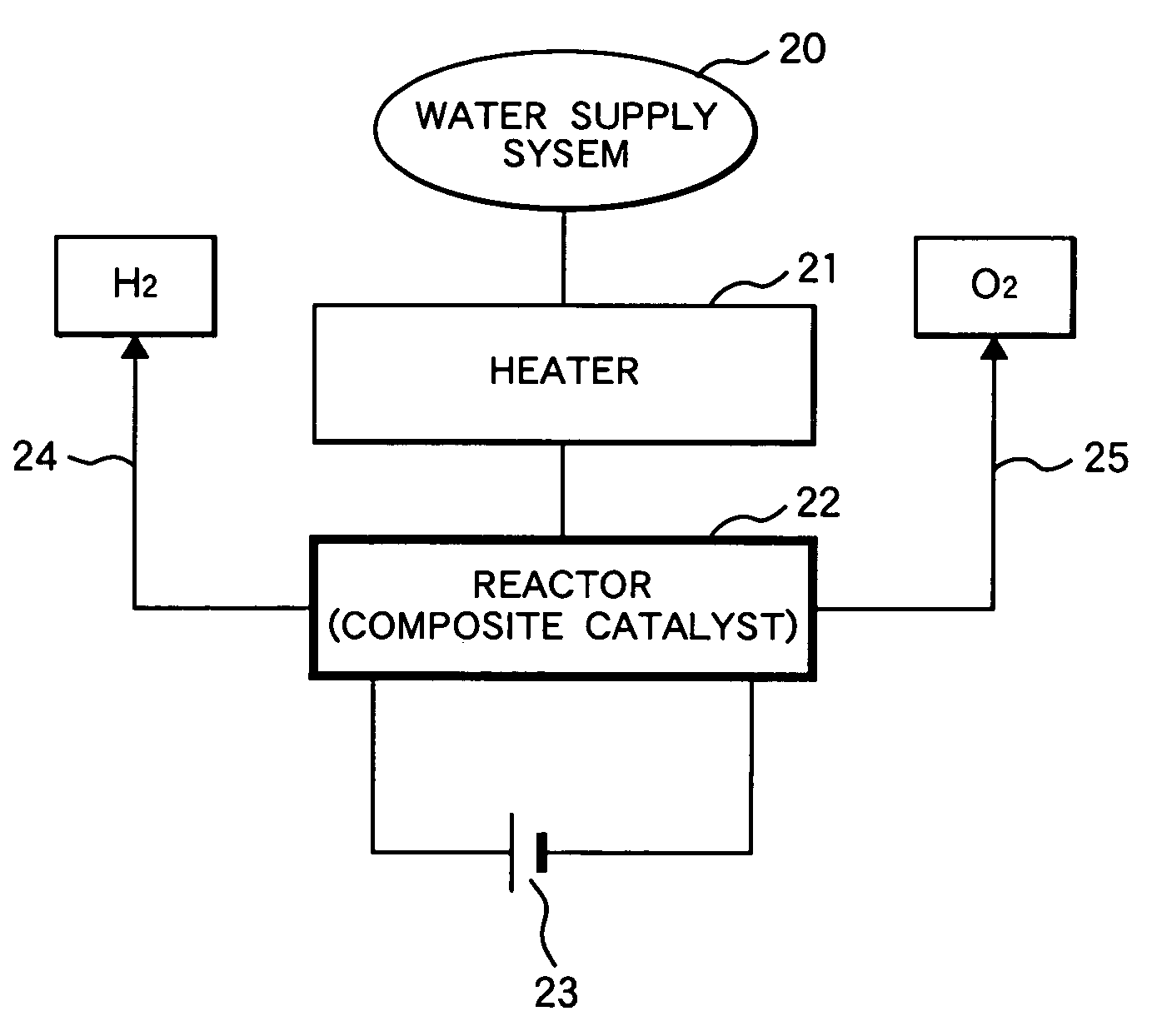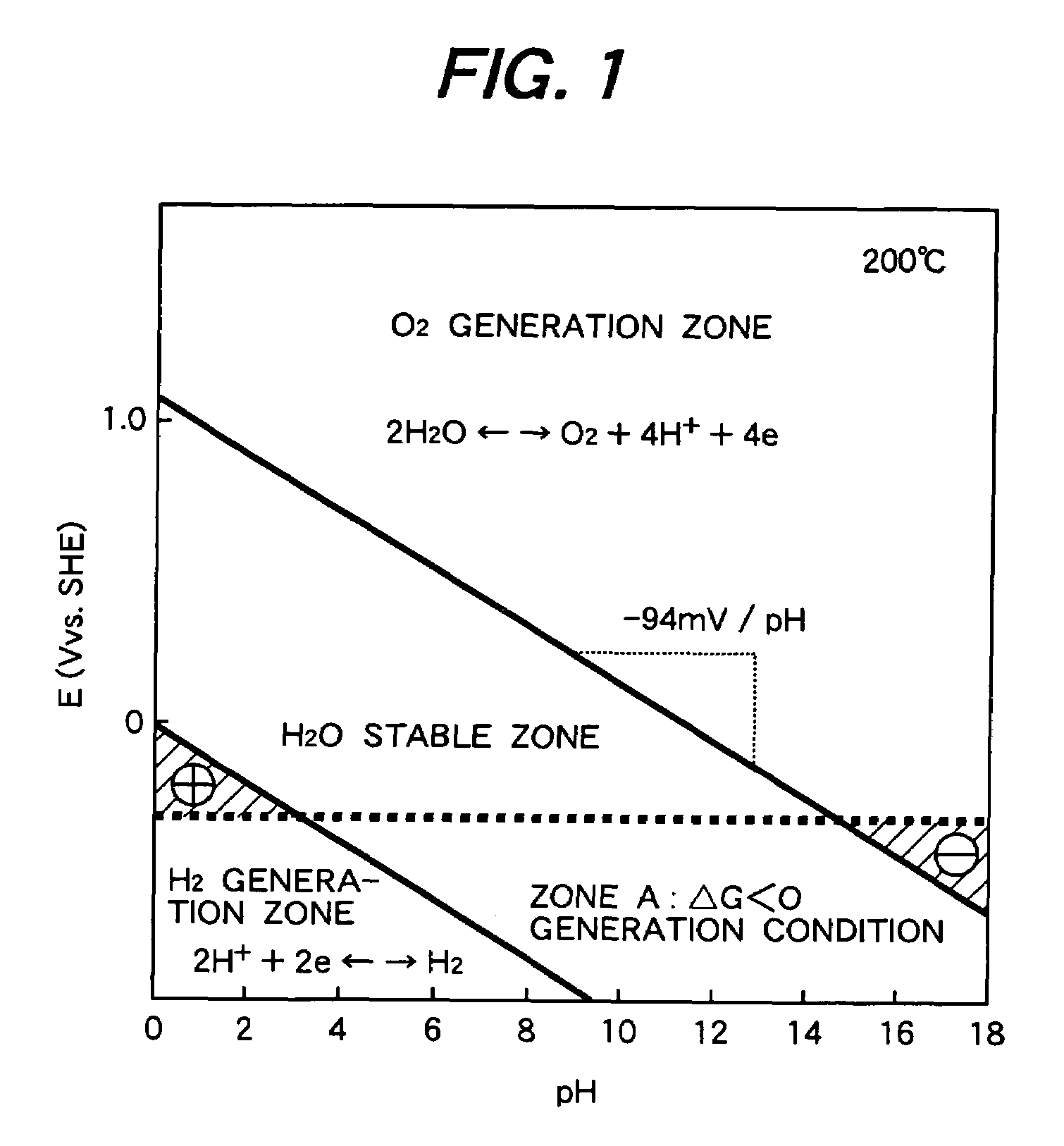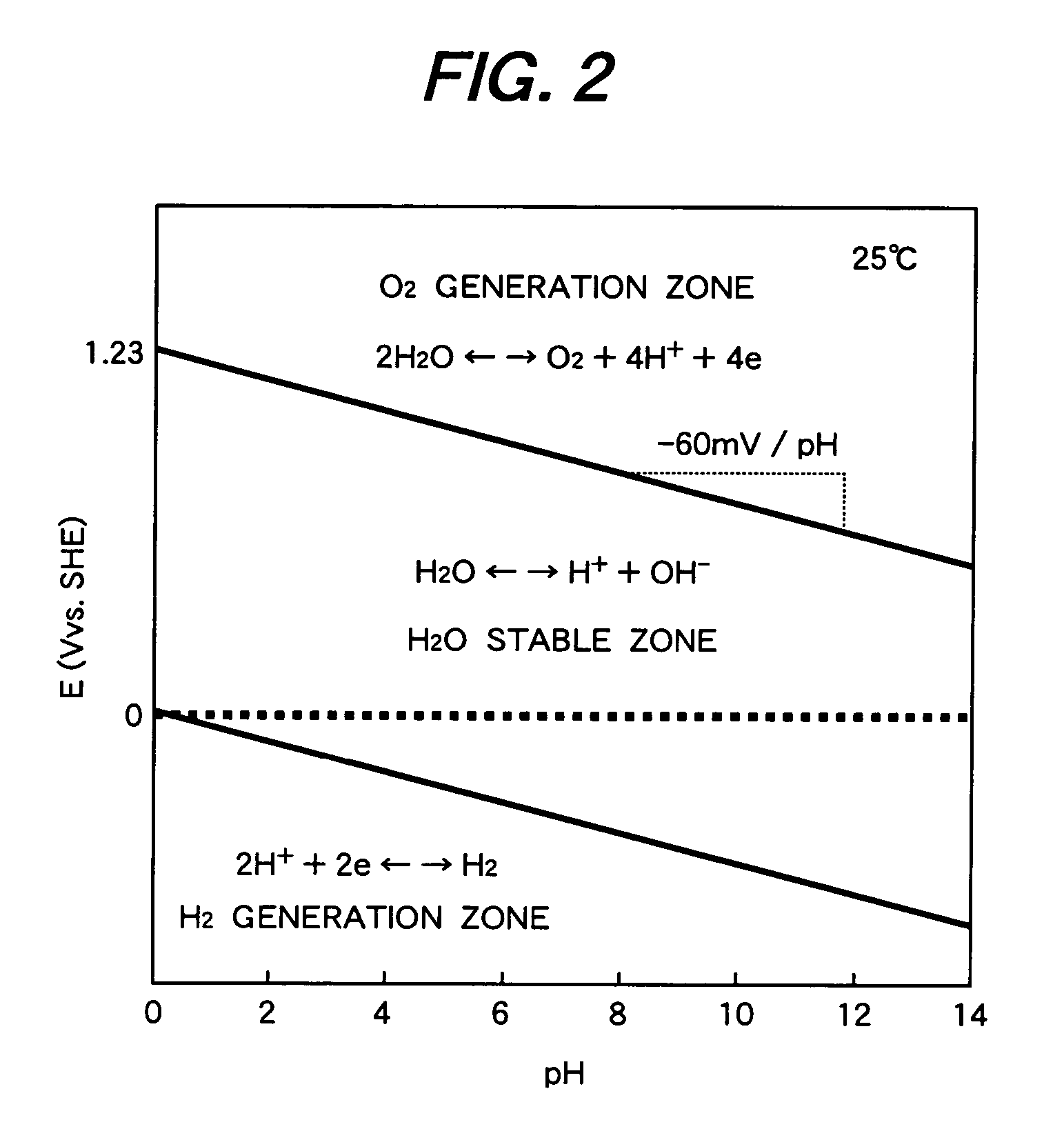Method of catalytic decomposition of water
a catalytic decomposition and water technology, applied in the direction of metal/metal-oxide/metal-hydroxide catalysts, physical/chemical process catalysts, instruments, etc., can solve the problems of inability to achieve direct thermal decomposition of water to produce hydrogen, and poor decomposition reaction efficiency
- Summary
- Abstract
- Description
- Claims
- Application Information
AI Technical Summary
Benefits of technology
Problems solved by technology
Method used
Image
Examples
embodiment 1
[0039]FIG. 1 is so-called the Pourbaix diagram showing a potential—pH diagram of water at 200° C. FIG. 2 is a potential—pH diagram of water at 25° C. The abscissas in FIGS. 1 and 2 show pH values and ordinate shows standard hydrogen potential.
[0040]In the potential—pH diagrams, the zone between the oxygen generation zone and the hydrogen generation zone shows an area where water exists stably. ΔE is obtained by subtracting the single electrode potential of the equation (4) from the single electrode potential of the equation (3).
[0041]In the diagrams, the cathode reaction is hydrogen generation reaction of (3) and the anode reaction is oxygen generation reaction of (4). The hydrogen generation reaction and the oxygen generation reaction accompany the water dissociation reaction of water shown by the equation (2), where protons accept electrons to form hydrogen and hydroxyl ions release electrons and protons to form oxygen. The overall reaction is expressed by the equation (1).
[0042]I...
embodiment 2
[0062]FIG. 6 is a diagram of a hydrogen production system comprising a catalytic decomposition reactor and a control systems. A mixture of steam and argon gas is supplied to the bottom of the reactor 1 from the water supply source 3. The carrier gas (Ar) is supplied to the steam from the carrier gas supply source 4.
[0063]The reactor is equipped with a heater connected to the electric heater power source 5. The reactor has a pressure vessel to withstand a high pressure. The adsorbed water in the catalysts is maintained in such a state that hydrogen is effectively produced by the micro-cells. The reactor is equipped with a pair of electrode for polarizing the micro-cells in the catalysts. As a result, the micro-cells decompose water to produce hydrogen and oxygen separately. The power source applies a potential between the electrodes of a voltage such as 1.0 volt, which is sufficient to polarize the micro-cells. Produced hydrogen and oxygen are discharged from the upper part of the re...
PUM
| Property | Measurement | Unit |
|---|---|---|
| temperature | aaaaa | aaaaa |
| size | aaaaa | aaaaa |
| temperature | aaaaa | aaaaa |
Abstract
Description
Claims
Application Information
 Login to View More
Login to View More - R&D
- Intellectual Property
- Life Sciences
- Materials
- Tech Scout
- Unparalleled Data Quality
- Higher Quality Content
- 60% Fewer Hallucinations
Browse by: Latest US Patents, China's latest patents, Technical Efficacy Thesaurus, Application Domain, Technology Topic, Popular Technical Reports.
© 2025 PatSnap. All rights reserved.Legal|Privacy policy|Modern Slavery Act Transparency Statement|Sitemap|About US| Contact US: help@patsnap.com



